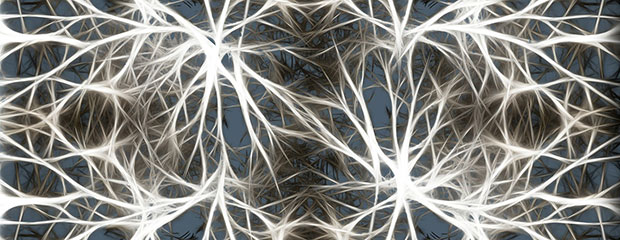- Skip Thought Vectors — research (with code) that produces surrounding sentences, given a sentence.
- A Beginner’s Guide to Deep Neural Networks (Google) — Googlers’ 20% project to explain things to people tackles machine learning.
- Data Analytics in Sports — O’Reilly research report (free). When it comes to processing stats, competing companies Opta and ProZone use a combination of recording technology and human analysts who tag “events” within the game (much like Vantage Sports). Opta calculates that it tags between 1,600 and 2,000 events per football game — all delivered live.
- On Go, Portability, and System Interfaces — No point mentioning Perl’s Configure.sh, I thought. The poor bastard will invent it soon enough.
"deep learning" entries


Four short links: 23 September, 2015
Sentence Generator, Deep Neural Networks Explainer, Sports Analytics, and System Hell


Four short links: 22 September 2015
Ant Algorithms, Git Commit, NASA's Deep Learning, and Built-In Empathy
- Ant Algorithms for Discrete Optimization (Adrian Colyer) — Stigmergy is the generic term for the stimulation of workers by the performance they have achieved – for example, termite nest-building works in a similar way. Stigmergy is a form of indirect communication “mediated by physical modifications of environmental states which are only locally accessible to the communicating agents.
- How to Write a Git Commit Message (Chris Beams) — A diff will tell you what changed, but only the commit message can properly tell you why.
- Deep Belief Networks at the Heart of NASA Image Classification — The two new labeled satellite data sets were put to the test with a modified deep-belief-networks-driven approach, ultimately. The results show classification accuracy of 97.95%, which performed better than the unmodified pure deep belief networks, convolutional neural networks, and stacked de-noising auto-encoders by around 11%.
- The Consequences of An Insightful Algorithm (Carina C. Zona) — We design software for humans. Balancing human needs and business specs can be tough. It’s crucial that we learn how to build in systematic empathy. (via Rowan Crawford)


Four short links: 16 September 2015
Data Pipelines, Amazon Culture, Real-time NFL Data, and Deep Learning for Chess
- Three Best Practices for Building Successful Data Pipelines (Michael Li) — three key areas that are often overlooked in data pipelines, and those are making your analysis: reproducible, consistent, and productionizable.
- Amazon’s Culture Controversy Decoded (Rita J King) — very interesting culture map analysis of the reports of Amazon’s culture, and context for how companies make choices about what to be. (via Mike Loukides)
- How Will Real-Time Tracking Change the NFL? (New Yorker) — At the moment, the NFL is being tightfisted with the data. Commentators will have access during games, as will the betting and analytics firm Sportradar. Users of the league’s Xbox One app, which provides an interactive way of browsing video clips, fantasy-football statistics, and other metrics, will be able to explore a feature called Next Gen Replay, which allows them to track each player’s speed and trajectory, combining moving lines on a virtual field with live footage from the real one. But, for now, coaches are shut out; once a player exits the locker room on game day, the dynamic point cloud that is generated by his movement through space is a corporately owned data set, as outlined in the league’s 2011 collective-bargaining agreement. Which should tell you all you need to know about the NFL’s role in promoting sporting excellence.
- Giraffe: Using Deep Reinforcement Learning to Play Chess (Matthew Lai) — Giraffe, a chess engine that uses self-play to discover all its domain-specific knowledge, with minimal hand-crafted knowledge given by the programmer. See also the code. (via GitXiv)

Bridging the divide: Business users and machine learning experts
The O'Reilly Data Show Podcast: Alice Zheng on feature representations, model evaluation, and machine learning models.
Subscribe to the O’Reilly Data Show Podcast to explore the opportunities and techniques driving big data and data science.
 As tools for advanced analytics become more accessible, data scientist’s roles will evolve. Most media stories emphasize a need for expertise in algorithms and quantitative techniques (machine learning, statistics, probability), and yet the reality is that expertise in advanced algorithms is just one aspect of industrial data science.
As tools for advanced analytics become more accessible, data scientist’s roles will evolve. Most media stories emphasize a need for expertise in algorithms and quantitative techniques (machine learning, statistics, probability), and yet the reality is that expertise in advanced algorithms is just one aspect of industrial data science.
During the latest episode of the O’Reilly Data Show podcast, I sat down with Alice Zheng, one of Strata + Hadoop World’s most popular speakers. She has a gift for explaining complex topics to a broad audience, through presentations and in writing. We talked about her background, techniques for evaluating machine learning models, how much math data scientists need to know, and the art of interacting with business users.
Making machine learning accessible
People who work at getting analytics adopted and deployed learn early on the importance of working with domain/business experts. As excited as I am about the growing number of tools that open up analytics to business users, the interplay between data experts (data scientists, data engineers) and domain experts remains important. In fact, human-in-the-loop systems are being used in many critical data pipelines. Zheng recounts her experience working with business analysts:
It’s not enough to tell someone, “This is done by boosted decision trees, and that’s the best classification algorithm, so just trust me, it works.” As a builder of these applications, you need to understand what the algorithm is doing in order to make it better. As a user who ultimately consumes the results, it can be really frustrating to not understand how they were produced. When we worked with analysts in Windows or in Bing, we were analyzing computer system logs. That’s very difficult for a human being to understand. We definitely had to work with the experts who understood the semantics of the logs in order to make progress. They had to understand what the machine learning algorithms were doing in order to provide useful feedback. Read more…

Unsupervised learning, attention, and other mysteries
How to almost necessarily succeed: An interview with Google research scientist Ilya Sutskever.
Get notified when our free report “Future of Machine Intelligence: Perspectives from Leading Practitioners” is available for download. The following interview is one of many that will be included in the report.
 Ilya Sutskever is a research scientist at Google and the author of numerous publications on neural networks and related topics. Sutskever is a co-founder of DNNresearch and was named Canada’s first Google Fellow.
Ilya Sutskever is a research scientist at Google and the author of numerous publications on neural networks and related topics. Sutskever is a co-founder of DNNresearch and was named Canada’s first Google Fellow.
Key Takeaways:
- Since humans can solve perception problems very quickly, despite our neurons being relatively slow, moderately deep and large neural networks have enabled machines to succeed in a similar fashion.
- Unsupervised learning is still a mystery, but a full understanding of that domain has the potential to fundamentally transform the field of machine learning.
- Attention models represent a promising direction for powerful learning algorithms that require ever less data to be successful on harder problems.
David Beyer: Let’s start with your background. What was the evolution of your interest in machine learning, and how did you zero-in on your Ph.D. work?
Ilya Sutskever: I started my Ph.D. just before deep learning became a thing. I was working on a number of different projects, mostly centered around neural networks. My understanding of the field crystallized when collaborating with James Martens on the Hessian-free optimizer. At the time, greedy layer-wise training (training one layer at a time) was extremely popular. Working on the Hessian-free optimizer helped me understand that if you just train a very large and deep neural network on a lot of data, you will almost necessarily succeed. Read more…

Building intelligent machines
To understand deep learning, let’s start simple.
Use code DATA50 to get 50% off of the new early release of “Fundamentals of Deep Learning: Designing Next-Generation Artificial Intelligence Algorithms.” Editor’s note: This is an excerpt of “Fundamentals of Deep Learning,” by Nikhil Buduma.
The brain is the most incredible organ in the human body. It dictates the way we perceive every sight, sound, smell, taste, and touch. It enables us to store memories, experience emotions, and even dream. Without it, we would be primitive organisms, incapable of anything other than the simplest of reflexes. The brain is, inherently, what makes us intelligent.
The infant brain only weighs a single pound, but somehow, it solves problems that even our biggest, most powerful supercomputers find impossible. Within a matter of days after birth, infants can recognize the faces of their parents, discern discrete objects from their backgrounds, and even tell apart voices. Within a year, they’ve already developed an intuition for natural physics, can track objects even when they become partially or completely blocked, and can associate sounds with specific meanings. And by early childhood, they have a sophisticated understanding of grammar and thousands of words in their vocabularies.
For decades, we’ve dreamed of building intelligent machines with brains like ours — robotic assistants to clean our homes, cars that drive themselves, microscopes that automatically detect diseases. But building these artificially intelligent machines requires us to solve some of the most complex computational problems we have ever grappled with, problems that our brains can already solve in a manner of microseconds. To tackle these problems, we’ll have to develop a radically different way of programming a computer using techniques largely developed over the past decade. This is an extremely active field of artificial computer intelligence often referred to as deep learning. Read more…


Four short links: 6 July 2015
DeepDream, In-Flight WiFi, Computer Vision in Preservation, and Testing Distributed Systems
- DeepDream — the software that’s been giving the Internet acid-free trips.
- In-Flight WiFi Business — numbers and context for why some airlines (JetBlue) have fast free in-flight wifi while others (Delta) have pricey slow in-flight wifi. Four years ago ViaSat-1 went into geostationary orbit, putting all other broadband satellites to shame with 140 Gbps of total capacity. This is the Ka-band satellite that JetBlue’s fleet connects to, and while the airline has to share that bandwidth with homes across of North America that subscribe to ViaSat’s Excede residential broadband service, it faces no shortage of capacity. That’s why JetBlue is able to deliver 10-15 Mbps speeds to its passengers.
- British Library Digitising Newspapers (The Guardian) — as well as photogrammetry methods used in the Great Parchment Book project, Terras and colleagues are exploring the potential of a host of techniques, including multispectral imaging (MSI). Inks, pencil marks, and paper all reflect, absorb, or emit particular wavelengths of light, ranging from the infrared end of the electromagnetic spectrum, through the visible region and into the UV. By taking photographs using different light sources and filters, it is possible to generate a suite of images. “We get back this stack of about 40 images of the [document] and then we can use image-processing to try to see what is in [some of them] and not others,” Terras explains.
- Testing a Distributed System (ACM) — This article discusses general strategies for testing distributed systems as well as specific strategies for testing distributed data storage systems.


Four short links: 18 July 2015
WebAssembly, Generative Neural Nets, Automated Workplace, and Conversational UIs
- WebAssembly (Luke Wagner) — new standard, WebAssembly, that defines a portable, size- and load-time-efficient format and execution model specifically designed to serve as a compilation target for the Web. Being worked on by Mozilla, Google, Microsoft, and Apple.
- Inceptionism: Going Deeper into Neural Networks (Google Research) — stunningly gorgeous gallery of images made by using a deep image-classification neural net to make the picture “more.” (So, if the classifier says the pic is of a cat, randomly twiddle pixels until the image classifier says “wow, that matches `cat’ even better!”)
- The Automated Workplace (Ben Brown) — What happens if this process is automated using a “bot” in an environment like Slack? — repeat for all business processes. (via Matt Webb)
- Conversational UIs (Matt Webb) — a new medium needs a new grammar and conversational UIs are definitely a new medium. As someone whose wedding vows were exchanged on a TinyMUSH, conversational UIs are near and dear to my heart.


Four short links: 15 June 2015
Streams at Scale, Molecular Programming, Formal Verification, and Deep Learning's Flaws
- Twitter Heron: Stream Processing at Scale (Paper a Day) — very readable summary of Apache Storm’s failings, and Heron’s improvements.
- Molecular Programming Project — aims to develop computer science principles for programming information-bearing molecules like DNA and RNA to create artificial biomolecular programs of similar complexity. Our long-term vision is to establish molecular programming as a subdiscipline of computer science — one that will enable a yet-to-be imagined array of applications from chemical circuitry for interacting with biological molecules to nanoscale computing and molecular robotics.
- The Software Analysis Workbench — provides the ability to formally verify properties of code written in C, Java, and Cryptol. It leverages automated SAT and SMT solvers to make this process as automated as possible, and provides a scripting language, called SAW Script, to enable verification to scale up to more complex systems. “Non-commercial” license.
- What’s Wrong with Deep Learning? (PDF in Google Drive) — What’s missing from deep learning? 1. Theory; 2. Reasoning, structured prediction; 3. Memory, short-term/working/episodic memory; 4. Unsupervised learning that actually works. … and then ways to get those things. Caution: math ahead.


Four short links: 27 May 2015
Domo Arigato Mr Google, Distributed Graph Processing, Experiencing Ethics, and Deep Learning Robots
- Roboto — Google’s signature font is open sourced (Apache 2.0), including the toolchain to build it.
- Pregel: A System for Large Scale Graph Processing — a walk through a key 2010 paper from Google, on the distributed graph system that is the inspiration for Apache Giraph and which sits under PageRank.
- How to Turn a Liberal Hipster into a Global Capitalist (The Guardian) — In Zoe Svendsen’s play “World Factory at the Young Vic,” the audience becomes the cast. Sixteen teams sit around factory desks playing out a carefully constructed game that requires you to run a clothing factory in China. How to deal with a troublemaker? How to dupe the buyers from ethical retail brands? What to do about the ever-present problem of clients that do not pay? […] And because the theatre captures data on every choice by every team, for every performance, I know we were not alone. The aggregated flowchart reveals that every audience, on every night, veers toward money and away from ethics. I’m a firm believer that games can give you visceral experience, not merely intellectual knowledge, of an activity. Interesting to see it applied so effectively to business.
- End to End Training of Deep Visuomotor Policies (PDF) — paper on using deep learning to teach robots how to manipulate objects, by example.
